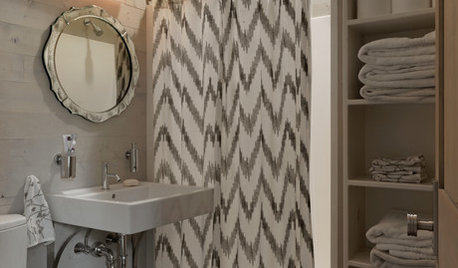Anyone else notice this?
quinnfyre
14 years ago
Related Stories

BEDROOMSThe Cure for Houzz Envy: Master Bedroom Touches Anyone Can Do
Make your bedroom a serene dream with easy moves that won’t give your bank account nightmares
Full Story
DECORATING GUIDESThe Cure for Houzz Envy: Guest Room Touches Anyone Can Do
Make overnight guests feel comfy and cozy with small, inexpensive niceties
Full Story
BUDGET DECORATINGThe Cure for Houzz Envy: Entryway Touches Anyone Can Do
Make a smashing first impression with just one or two affordable design moves
Full Story
KITCHEN DESIGNThe Cure for Houzz Envy: Kitchen Touches Anyone Can Do
Take your kitchen up a notch even if it will never reach top-of-the-line, with these cheap and easy decorating ideas
Full Story
COMMUNITYCommunity Building Just About Anyone Can Do
Strengthen neighborhoods and pride of place by setting up more public spaces — even small, temporary ones can make a big difference
Full Story
DECORATING GUIDESThe Cure for Houzz Envy: Dining Room Touches Anyone Can Do
Get a decorator-style dining room on the cheap with inexpensive artwork, secondhand furniture and thoughtful accessories
Full Story
LAUNDRY ROOMSThe Cure for Houzz Envy: Laundry Room Touches Anyone Can Do
Make fluffing and folding more enjoyable by borrowing these ideas from beautifully designed laundry rooms
Full Story
BATHROOM DESIGNThe Cure for Houzz Envy: Bathroom Touches Anyone Can Do
Take your bath from blah to ‘ahhhh’ with just a few easy and inexpensive moves
Full Story
MUDROOMSThe Cure for Houzz Envy: Mudroom Touches Anyone Can Do
Make a utilitarian mudroom snazzier and better organized with these cheap and easy ideas
Full Story
DECORATING GUIDES7 Bedroom Styling Tricks Anyone Can Do
Short on time or money? You can spruce up your bedroom quickly and easily with these tips
Full Story





Denise
quinnfyreOriginal Author
Related Professionals
Severn Landscape Architects & Landscape Designers · Vernon Hills Landscape Architects & Landscape Designers · Jackson Landscape Contractors · Belvedere Park Landscape Contractors · Bound Brook Landscape Contractors · La Mirada Landscape Contractors · Laguna Hills Landscape Contractors · North Lauderdale Landscape Contractors · Shaker Heights Landscape Contractors · 07920 Landscape Contractors · Eustis Driveway Installation & Maintenance · Grand Rapids Driveway Installation & Maintenance · Milpitas Driveway Installation & Maintenance · Pontiac Driveway Installation & Maintenance · Winston-Salem Driveway Installation & MaintenanceDenise
User
Denise
quinnfyreOriginal Author
patrick51
quinnfyreOriginal Author
mdahms1979
cpawl
patrick51
quinnfyreOriginal Author
maidinmontana